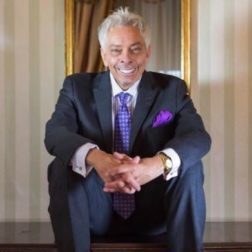
(Mike McVay) “If you want to learn … you learn.” It’s appropriate that as we approach Mother’s Day, I quote my mother, who said that to me on many an evening when I sat at the kitchen table doing my homework. It is that upbringing that led to me attending every conference I can and to listen to others as a student. It’s true that I speak or participate in sessions at many of them, but my passion is to hear what others think. In our industry there are many opportunities to learn. Radio Ink Forecast, Country Radio Seminar, The All Access Audio Summit, Morning Show Bootcamp, Talkers and the big one … the NAB.
This most recent NAB, the first in-person for the group since fall 2019, reinforced how good it feels to be together in-person and to have the ability to stop in hallways and reconnect, as well as visit exhibits and see what new developments were designed and released since we were last together in the grand hall. It also presented a cornucopia of lessons to learn … if you want to learn.
My Takeaways:
-
- FCC Chairwoman Jessica Rosenworcel believes strongly in the power of local radio. What qualifies as local radio is arguable these days with more and more stations eliminating local talent in favor of voice tracking and/or syndication. That means, as I’ve written in the past, you need to make a conscious effort to localize your content and service elements, if you’re using syndication. Syndicated talent should be delivering not only imaging lines for you to use on air, but reenforcing your promotions, sharing content of concern to your community and serve the local community.
- Veritone shared with attendees Voice-to-Voice, which enables a personality to clone their voice, which will allow talent to do exactly what I noted above. By creating a voice twin, personalities at the national syndication/network level can be as localized as any affiliate wants, and stations can have major talent update content daily.
- Entertainer, syndicated radio personality & TV host and media maven Nick Cannon shared little known stories about the talent that he’s found along the way. He refused to use the word discovered and instead said he was “lucky enough to meet and get to know” … of which the names included a 15-year-old Pete Davidson. He shared similar stories of others, but only when asked. Two takeaways there are that we should always be open to talking to everyone as we never know where the next star is coming from and we don’t discover someone. We were lucky to meet them. Memorable from Cannon was the quote “Definition of ‘Entrepreneur:’ Someone who jumps out of the window and on the way down figures out how to land.”
- Jacobs Media’s Fred and Paul Jacobs participated in one of three panels discussing the Connected Car. The need to keep radio on the center stack, and to be a part of the “Screenification” of the car is critical to remain among the choices the audience has available to them. Key words here, which are mine, is to remain among the choices. We’re losing dominance as more choices are introduced into Smart Cars. Position in the center stack is important, having people use your radio station is dependent on having attractive content, or where you are won’t matter. It isn’t radios’ birthright to have an audience. It has to be earned.
- Interviewing All Access Founder and Owner, Joel Denver shared that he believes radio needs to look at how it has allowed other medium to take audience, because we’re not investing in the product and not focusing on providing the audience with variety. We’re not spending enough time on our product to know what the audience shows that they want. Invest in product.
- The Alliance for Women in Media breakfast had several strong and poignant takeaways. Proud to be on the Board of the Directors for the Foundation of the organization, I found this panel was one of the most interesting that I viewed, and had the most diversity of opinions. The conversation centered on Maintaining Media Relevance. Panelists included Premiere’s President Julie Talbott, Audacy SVP Digital Tim Clarke, Marian Pittman EVP of Content, Production & Innovation at Cox Media Group, and Jayne Bussman-Wise, Creator Acquisition & Growth at AMP, which is owned by Amazon. It was clear that while some broadcasters are embracing social media and digital technology, others are approaching it cautiously. One comment that resonated with me came from Bussman-Wise, who as a pureplay digital executive said that “just because you’re good on TikTok doesn’t mean that you’re going to be good on the radio.”
- The Broadcast Foundation of America Breakfast is always a “must attend” as it not only acknowledges and awards the best of the business, it is a fund-raising event for the foundation which helps broadcasters in need. The takeaway for me from this particular event? That Bryon Allen, media mogul who owns Entertainment Studios which includes among other businesses The Weather Channel, may be the most dynamic and entertaining CEO in media.
The NAB focused specifically on many areas for radio, including the future. There was little or no sugarcoating. Radio has many competitors. Continuing to do what we’ve been doing, in a business that is seeing erosion of audience and revenue, requires strength and a commitment to super serve the audience and advertiser. There was much to be learned.
Mike McVay is President of McVay Media and can be reached at [email protected]
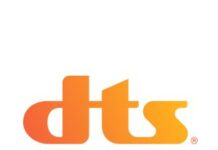
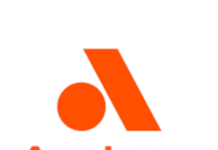
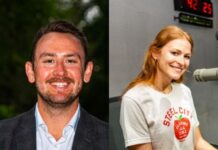
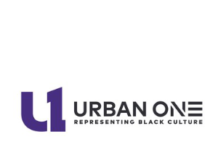


Lots of questions from your post, Mike. The brilliant people who spoke at the NAB offered insight as to the issues facing radio, little solution. The answers are many and varied, and the people who make the decisions at the top of radio’s “food chain” seem to be looking the other way. Even the CEO sessions seemed to ignore radio’s measurement problem (1400 meters in Los Angeles? Really?)-and the things that drive listeners to other media. Horrendously long commercial sets. Irrelevant commercials, presented by amateurs with little passion. If that’s what works for the 1400 meter carriers in a given market, there must be something wrong with the measurement system. Yes it’s true that radio doesn’t “deserve” a place in the ever crowded dashboard but what is radio doing to “deserve” it’s place? It’s just one opinion that shows like NAB should be focusing in on the solutions, not the problems. Some time in 1951 it appears that Todd Storz, with his low-rated station found a solution by finding out what people “liked” and gave it to them. Is there a reason that doesn’t work today? The saving grace (in 2022) is that none of radios competitors have found a way to completely offer the benefits of broadcasting over AM/FM. When they do what will happen to the towers and transmitters? I’m sure you’re growing tired of hearing the problems without the people who can fix them-not fixing them. I know I am.
Dan: Absolutely I agree. We have a HUGE measurement problem and we have a terrible content problem. We’ve ruined the listening experience. I try to shield my frustration that the solutions are obvious and no one works to solve the problem. Apologies if they show through in what I write, but at times it feels as if I am on a merry-go-round. In regard to finding solutions … I don’t see it as the NAB failing in that regard, as they’re offering the platform. We’re not hearing anything new, and to your point, we’re not hearing solutions. I’ve already written my article for next Monday’s issue of Radio Ink. It focuses on 5 things to do to improve the product. Next week.